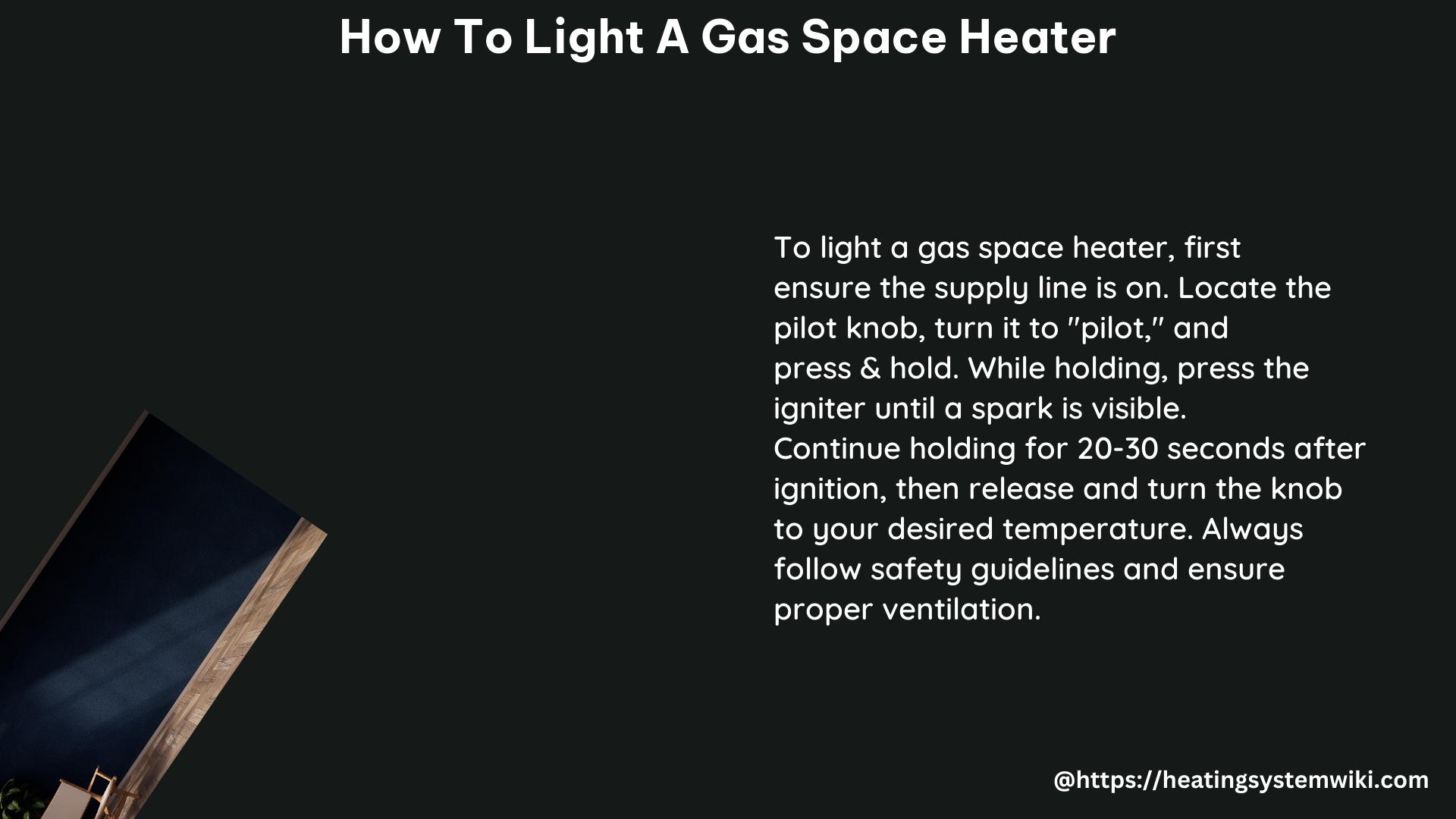Lighting a gas space heater can be a straightforward task, but it’s essential to follow the proper safety precautions and understand the technical specifications of your particular model. This comprehensive guide will walk you through the step-by-step process of lighting a gas space heater, providing you with the necessary information to ensure a safe and efficient operation.
Choosing the Right Heater and Ensuring Safety
When selecting a gas space heater, it’s crucial to consider the size of the area you need to heat. Small propane heaters can generate up to 5,000 BTUs per hour, while larger models can produce between 10,000 and 45,000 BTUs per hour. Choose a heater that is appropriately sized for the space to ensure efficient and safe operation.
Proper ventilation is also a critical safety factor when using a gas space heater. Never operate the heater in a small, enclosed space, as this can lead to the buildup of harmful gases, such as carbon monoxide. Ensure that the area is well-ventilated and that the heater is positioned away from any flammable materials or obstructions.
Preparing the Heater

If your gas space heater is heavy, use a hand-truck or trolley to move it to the desired location. Before lighting the heater, inspect the regulator to ensure it is working correctly. If the regulator is damaged or malfunctioning, replace it with a new one to prevent any potential issues.
Lighting the Heater
-
Turn the Thermostat to the Lowest Setting: Begin by turning the thermostat to its lowest setting to ensure the heater doesn’t immediately ignite at a high temperature.
-
Turn the Gas Knob to the OFF Position: Locate the gas knob on the heater and turn it to the OFF position. Wait for at least 5 minutes to allow any accumulated gas to clear out of the system.
-
Locate the Pilot Light: Identify the location of the pilot light on your gas space heater. This is where you will need to apply the flame to ignite the main burner.
-
Turn the Gas Knob to the Pilot Setting: Turn the gas knob to the pilot setting, then press and hold it in. This will allow gas to flow to the pilot light.
-
Light the Pilot: While holding the gas knob in, use a long match or a barbecue lighter to light the pilot light. Continue to hold the gas knob for about a minute to ensure the pilot light remains lit.
-
Release the Gas Knob and Turn it to the ON Position: Once the pilot light is lit, release the gas knob and turn it to the ON position. This will allow the main burner to ignite.
Testing the Heater
After lighting the heater, turn up the thermostat to see if the main burner ignites and the heater begins to produce heat. If the heater does not heat up as expected, refer to the manufacturer’s instructions or consult a professional for further assistance.
Safety Measures
When shutting off the gas space heater, remember that the unit will remain hot for 7 to 8 minutes. After 15 to 20 minutes, you can safely test the heat by placing your hands around the head of the heater, being careful not to touch the hot surface.
Technical Specifications
- BTUs: Small propane heaters can create up to 5,000 BTUs per hour, while large propane heaters emit between 10,000 and 45,000 BTUs per hour.
- Heater Features: Look for gas space heaters with heat-resistant burners, rain- and wind-resistant shields, lightweight bodies for easy handling, and manual shut-off options.
DIY Tips
- Always follow the manufacturer’s instructions for your specific heater model.
- If you’re having trouble lighting the heater, consult a professional repair person or consider purchasing a new heater.
